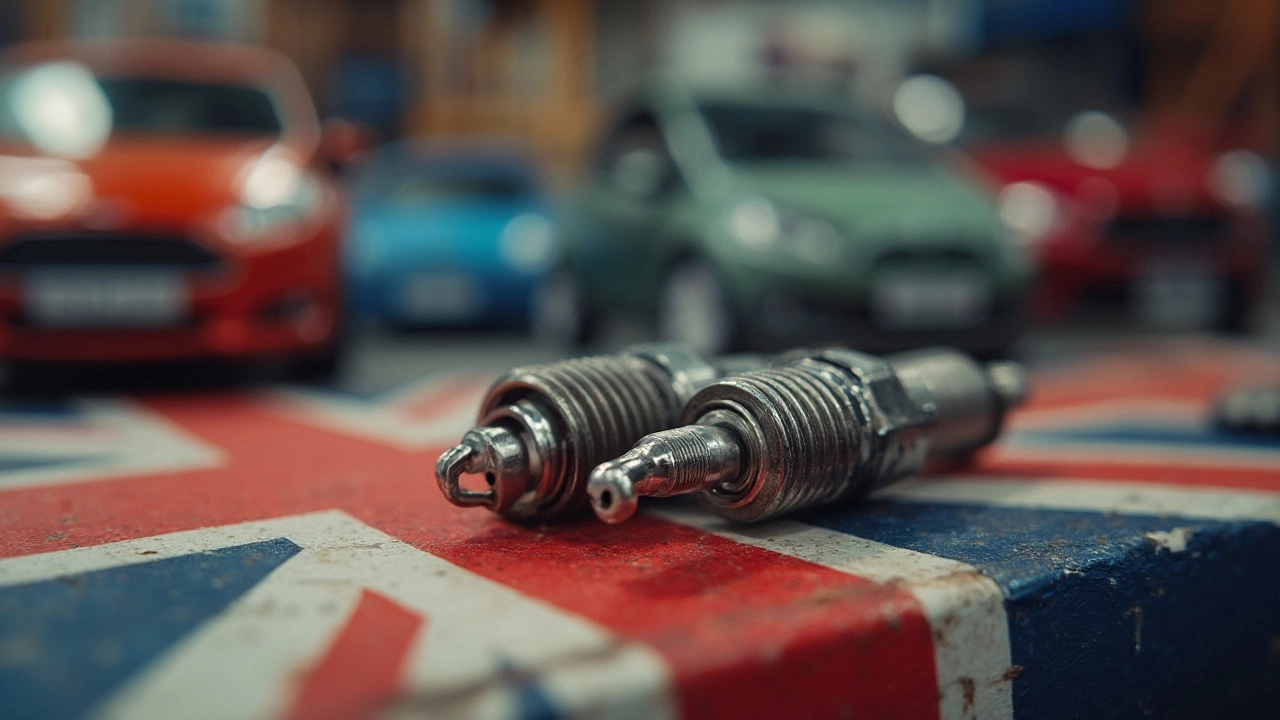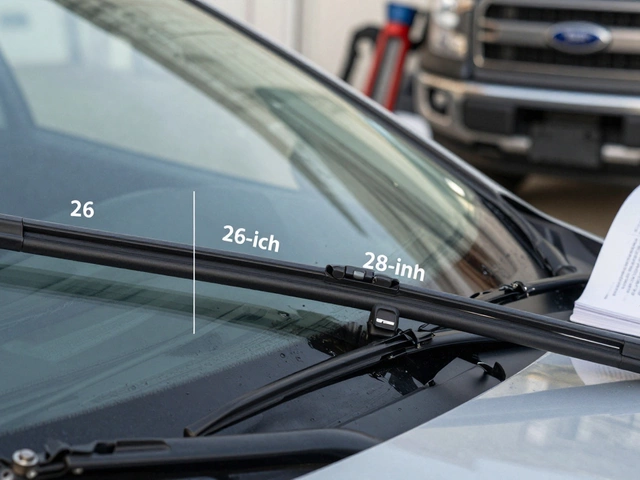Here’s a question that pops up at every city garage: can a car get by without spark plugs? It’s tempting to think you might be able to save a few bucks by skipping them—especially if your ride’s running rough and you’re tired of hearing about “tune-ups.” But if your vehicle runs on gasoline, those little plugs aren’t just some extra part—they’re the key to starting and keeping your engine going.
Every time you turn your key (or push that button), spark plugs jump into action. They send an electric jolt to light up the fuel-air mix inside your engine. Without this spark, nothing happens—just silence, maybe a click, but no roaring engine. So, if your car’s missing a spark plug, or if it’s worn out, there’s no magic workaround. The engine can’t fire up properly, and you’re not going anywhere fast.
Now, there’s a catch with diesels—that’s a whole different story. And sometimes, spark plugs can give you trouble even when they’re still in place. But before we jump into hacks and fixes, it’s worth knowing exactly what these plugs do, and how you can tell when something’s gone off track. Trust me, a tiny part like this can make the difference between a smooth trip and being stuck on the side of the road.
- What Spark Plugs Actually Do
- Can Gasoline Cars Run Without Spark Plugs?
- Diesel Engines and No Spark Plug Myth
- What Happens When Spark Plugs Fail
- Spotting and Fixing Spark Plug Issues
- Pro Tips to Keep Your Engine Firing
What Spark Plugs Actually Do
Ever wondered what’s actually happening under the hood when you turn the key? Spark plugs are the real MVPs in a gasoline engine. Their main job is simple but absolutely crucial: they create a bolt of electricity that lights up the air-fuel mix in each cylinder. Without this little bang, your engine doesn’t even cough—no combustion, no power, no go.
The process kicks off every time the piston compresses air and fuel inside each cylinder. The spark plug fires at the perfect moment, and this tiny electric spark explodes the mixture. That bang pushes the piston down, spins the crankshaft, and keeps your wheels rolling. A car engine needs this action to repeat thousands of times every single minute—just one misfire in a cylinder means your ride feels rough or sluggish.
Let’s break it down with some real data. Most spark plugs in modern gasoline cars fire about 1,500 times per minute per cylinder when cruising on the highway. Fire up a V6 engine, and you’re talking about 9,000 sparks every minute just to keep it moving steady.
| Engine Type | Cylinders | Sparks per Minute (at 1500 RPM) |
|---|---|---|
| Straight-4 | 4 | 6,000 |
| V6 | 6 | 9,000 |
| V8 | 8 | 12,000 |
It’s not just about making sparks. The timing has to be spot-on, the plug tips have to stay clean, and the gap has to be set just right. If that’s off, you’ll probably feel it in the way your engine stumbles, gets lousy mileage, or refuses to start. That’s why keeping tabs on your spark plugs is not just a good idea—it’s essential car maintenance. Skip them, and you might be calling for a tow when you least expect it.
Can Gasoline Cars Run Without Spark Plugs?
If your car runs on gasoline, it flat-out won’t run without spark plugs. The whole point of the spark plug is to ignite the air-fuel mix in the cylinder. Take them away, and nothing is lighting up that mixture—your car’s just a heavy hunk of metal going nowhere. Every gasoline engine, whether it’s a flashy sports car or your old daily driver, needs at least one spark plug per cylinder. No exceptions. No "life hack" around it.
Here’s a quick table to show why they’re so critical in different engine types:
| Engine Type | Number of Spark Plugs Needed | Consequence Without Spark Plugs |
|---|---|---|
| 4-Cylinder Gasoline | 4 | Refuses to start |
| 6-Cylinder Gasoline | 6 | Stutters/misfires, may not run at all |
| 8-Cylinder Gasoline | 8 | No combustion, dead engine |
Some folks think you can pull out a bad plug and get away with it. Not true. If even one plug is dead or missing, that whole cylinder stops working. You might get a rough idle or the engine might shake and sputter, but you’re risking major engine damage just trying it.
Why are spark plugs absolutely required? Gasoline engines use something called "spark ignition." No spark means no burn, and that means no power. There’s no modern fuel-injection trick or computer magic that can save you if your spark plugs are gone or done for. That’s why mechanics always check plugs first when the engine won’t start. It’s simple: without working spark plugs, your engine can’t do its job. Period.
- Always replace spark plugs according to your car’s manual—neglecting them can cause huge headaches down the road.
- If you notice trouble starting, rough running, or your check engine light keeps flashing, check your plugs first.
- Never try “just one plug short”—it’s not a shortcut, it’s a shortcut to engine damage.
If you want your car to fire up every day, keep your spark plugs in top shape—otherwise, you’ll be calling for a tow.
Diesel Engines and No Spark Plug Myth
A lot of people think every car engine runs with spark plugs, but that’s not true. Diesel engines work totally differently from your typical gas-powered ride. In fact, the whole point of a diesel is that it runs without spark plugs at all.
Here’s the deal: Instead of igniting fuel with a spark, diesel engines use compression. They squeeze the air really tight inside the cylinder until it gets super hot—hot enough to set the fuel off all by itself. That’s called compression ignition. No sparks needed. This is why you can’t swap a diesel and gas engine’s ignition parts. If you try, you’re setting yourself up for a headache.
Still not sold? Check out this comparison to get it clear:
| Engine Type | How Fuel Ignites | Has Spark Plugs? |
|---|---|---|
| Gasoline | Spark ignition (needs spark plugs) | Yes |
| Diesel | Compression ignition (no spark plugs) | No |
If you own or drive a diesel, you might hear about glow plugs. Don’t mix them up with spark plugs. Glow plugs just help warm things up when it’s freezing outside—they don’t make a spark or fire off the fuel during normal driving.
So, bottom line: if your car, truck, or tractor runs on diesel, you don’t need to worry about missing spark plugs. Gas engines? That’s a whole other story. Knowing this simple difference saves you a lot of cash and wasted trips to the parts store.

What Happens When Spark Plugs Fail
When spark plugs lose their edge, everything about your drive changes. You might notice your car is sluggish when you hit the gas, or maybe the engine shakes and rattles like it caught a cold. The real trouble? Your car can’t burn fuel cleanly. So instead of smooth power, you get jerky movements and less “go” when you step on the pedal.
Here’s what actually happens with bad or dead spark plugs:
- Engine misfires: The most common sign. It feels like your engine skips a beat or stutters, especially when you accelerate or your car sits and idles. That sudden jerk isn’t just annoying—it can actually hurt your engine over time.
- Poor gas mileage: Without a strong spark, your engine burns more fuel than it needs. You’ll notice you have to fill up earlier than usual, even if you’re driving the same way.
- Hard starts: If the plugs are worn out, starting your car becomes tough. You might crank and crank, and nothing happens right away. On cold mornings, this gets even worse.
- Check engine light: Most cars spot the problem and flash a warning on your dashboard. Ignoring this light could mean more serious (and expensive) repairs down the road.
- Rough idling: Listen for rough or uneven sounds when your engine’s running but you’re parked. Sometimes it’s just a rough “chug-chug” kind of noise—other times the whole car vibrates.
Riding around with dead spark plugs isn’t just about comfort. Over time, you risk damaging the catalytic converter, which is a pricey fix. Plus, unburned fuel can start to build up inside the engine, leading to less power and more problems. If you’re noticing any of these signs, don’t wait—swap them out and keep your spark plugs fresh. Regular checks save you money and headaches in the long run.
Spotting and Fixing Spark Plug Issues
If your car starts sputtering, misfiring, or guzzling gas, there’s a good chance your spark plugs are begging for attention. Bad spark plugs don’t just ruin performance—they can also cause your check engine light to come on, trigger annoying engine knocks, or make cold starts a nightmare. Most folks don’t realize that even a barely worn plug can mess up your fuel economy, sometimes by 20% or more.
How can you tell if spark plugs are the culprit? Check for these signs:
- Rough idling or trouble starting
- Slow acceleration or loss of power, especially going uphill
- Poor gas mileage
- Popping or knocking sounds coming from the engine
- Check engine light appearing with misfire codes (like P0300, P0301, etc.)
Taking a look at your old spark plugs can tell you a lot about what’s going on in the engine. A healthy plug is tan or greyish at the tip—if it’s black and sooty, your engine might be running rich (too much gas). Oily plugs point to worn piston rings or valve seals. If it’s white and crusty, you’re probably looking at overheating or lean running (too much air, not enough fuel).
Replacing spark plugs is usually straightforward, but always check your car’s manual for the right type and gap. Here’s how you can do it yourself:
- Let your engine cool down completely.
- Find the spark plug wires or ignition coils—remove them gently.
- Use a spark plug socket to unscrew the old plug.
- Check the new plug’s gap (most auto parts stores will do this for you).
- Thread in the new plug by hand to avoid stripping, then snug it up with the socket (don’t overtighten).
- Reattach the ignition coil or wire.
If you don’t feel up to the task, no shame in letting a tech handle it. DIY is cheaper, but a pro can spot early signs of problems like worn coil packs, cracked plug boots, or other hidden issues. And don’t ignore regular replacement intervals—most modern plugs go 60,000-100,000 miles, but some engines eat them up faster.
Pro Tips to Keep Your Engine Firing
Keeping your engine in top shape isn’t rocket science, but it does come down to a few basic habits. Let’s focus in on how you can make those spark plugs last longer—and spot trouble before it turns into a headache.
- Stick to the Schedule: Most cars need new spark plugs every 30,000 to 100,000 miles, depending on the type you use. Copper plugs wear out quicker, but platinum and iridium plugs can last way longer. Check your owner’s manual. Don’t let them go too long.
- Watch for Engine Warning Signs: If your engine’s misfiring, idling rough or you’ve got trouble starting, don’t ignore it. A little hiccup can signal your plugs are on their way out.
- Use the Right Plugs: The big auto stores carry just about every plug, but that doesn’t mean all will fit your car. Always go with what your manufacturer recommends—wrong plugs can fry your ignition system or drop your gas mileage fast.
- Gaps Matter: Some drivers don’t pay attention to the spark plug gap, but even fresh plugs can have the wrong gap right out of the box. Double check the gap with a gauge so your engine fires like it’s supposed to.
- DIY Replacements? Take It Slow: If you’re changing them yourself, work on a cool engine and clean the area first so dirt doesn’t fall inside. Hand-tighten first, and finish with a torque wrench—overtightening is the easiest way to snap a plug or strip a thread.
It also helps to look out for what can kill your spark plugs fast—like cheap gas, oil leaks, or bad fuel filters. Swapping out old, burned, or oil-fouled plugs is way cheaper than replacing a whole ignition coil or catalytic converter down the line.
| Plug Type | Average Lifespan | Price Range (USD) |
|---|---|---|
| Copper | 30,000 miles | $2–$5 |
| Platinum | 60,000 miles | $6–$15 |
| Iridium | 90,000–100,000 miles | $8–$25 |
One last thing—if you suddenly see a drop in gas mileage, that’s often your spark plugs telling you they’re done. Regular checks and smart replacements can keep your engine running strong and help you avoid those surprise repair bills.








